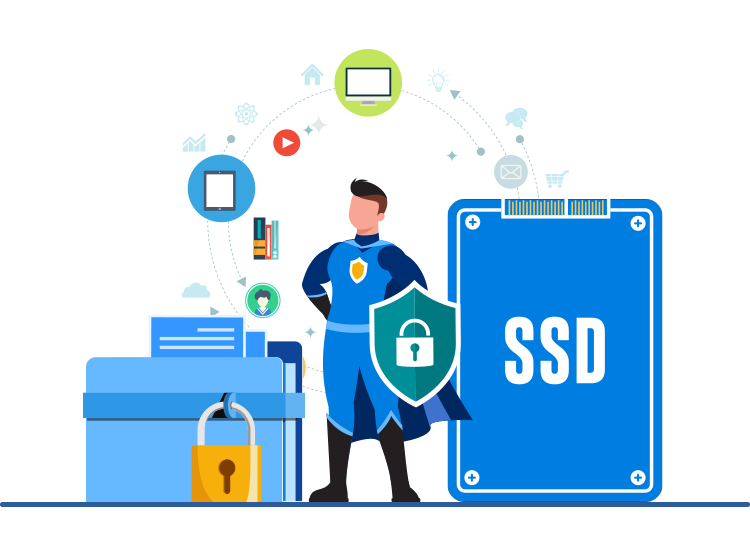
Lots of people use Solid-State Drive (SSD) devices, but few think about the SSD lifespan. They are compact, fast, and quiet devices to keep your files on. Moreover, they are more robust than HDDs, as they do not include any mechanical components.
Still, few users know that they cannot be used forever, without risks. In this article, we let you know how to make them last longer and what you should pay attention to.
What is SSD lifespan?
The Solid State Drive technology proved to be more reliable than hard disk drives (HDDs). But there is a defined lifespan for the flash cells that store data on these devices. This is because the flash memory ages, after each writing process. So, depending on the manufacturer, they could be used for 1,000-100,000 operations.
Nevertheless, technology also affects it, as there are single-level cells, multi-level cells, triple-level cells, and quad-level cells SSDs. This refers to the number of information bits per cell. The higher, the better.
The industry states the lifetime of these devices as total bytes written (TBW) value. This means the total number of bytes a user can write/re-write on such devices. Usually, manufacturers guarantee a write volume of 80 TBW. This would mean about 10 years, for average users.
What affects the lifetime?
The writing strategy is one of the things that directly affect the SSD lifespan. To make it more effective, producers make it evenly distribute the entries of all memory blocks. So, they manage to get a balanced utilization of it. And its effect is prolonging memory life.
Also, activating the TRIM function is an important thing. This marks invalid data (no longer in use) and informs the SSD that it can erase it. So, when the computer goes idle, this data is deleted.
Some SSDs also have the over-provisioning option. If active, it works like a cache where it relocates temporary data.
Outsourcing backup files helps a lot. So, you can store them on an HDD. Still, make sure you keep the system-relevant files, on the SSD, to preserve the performance of the system.
But physical factors also dramatically affect the life of electronic memory. Still, they are more resistant to mechanical shocks than an HDD. Remember to Always protect them from high temperatures and humidity.
Remember to use the memory every once in a while. This should prevent loss of cell charge, which can determine the occurrence of disabling the SSD. So, they are not a good option to store data, offline.
Things to pay attention to
Although there is no physical sign of an SSD failure, there are still signs that should alert you. But you need monitoring software (SSD-Z, HD Sentinel) that offers important data about its health. Here is a list of the best such tools.
Whenever the overall rating seems to be seriously affected, then it might be a connection issue. Remember that if a technical issue occurs, it would be really difficult, if not impossible, to recover your data. Quick disconnection of the SSD from the computer prevents further data loss.
At this point, only a professional data recovery provider could help you. This is because of the encryption techniques used on these devices. And, of course, the process is costly.
So, to protect your data, it is wise to keep a securely encrypted cloud backup. For this, remember the 3-2-1 rule.
Now, that you know all these things, your data should be safe!

